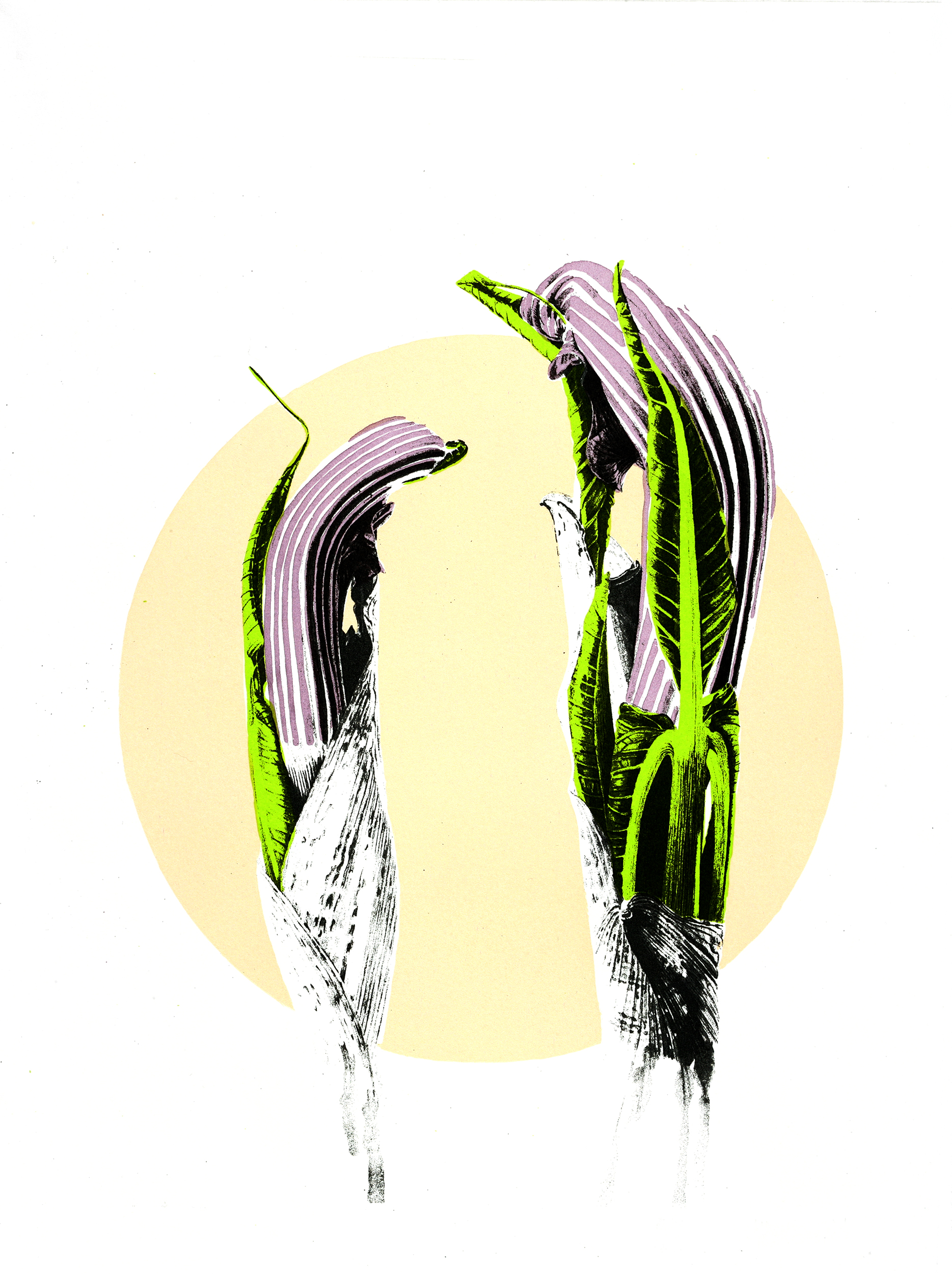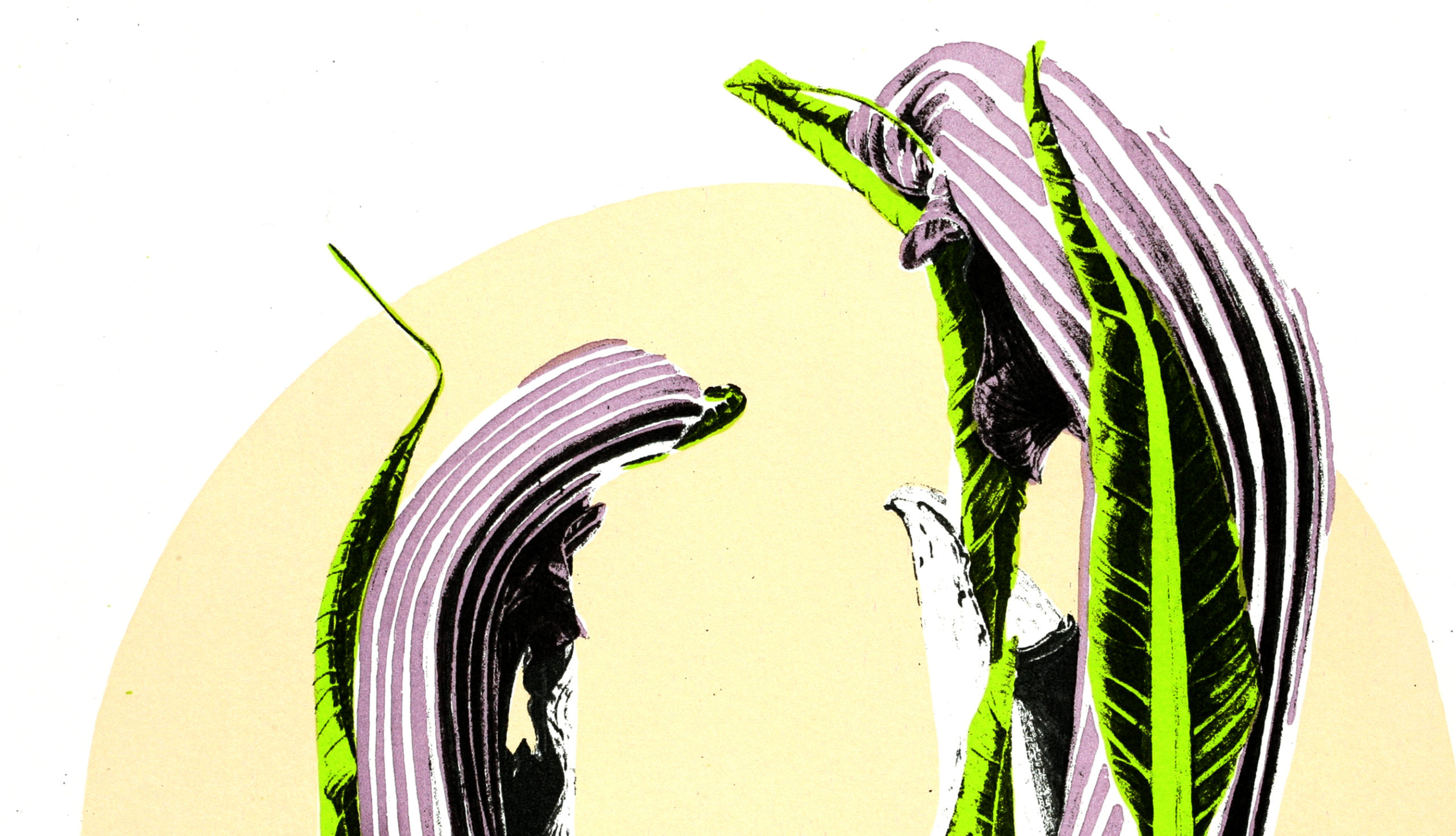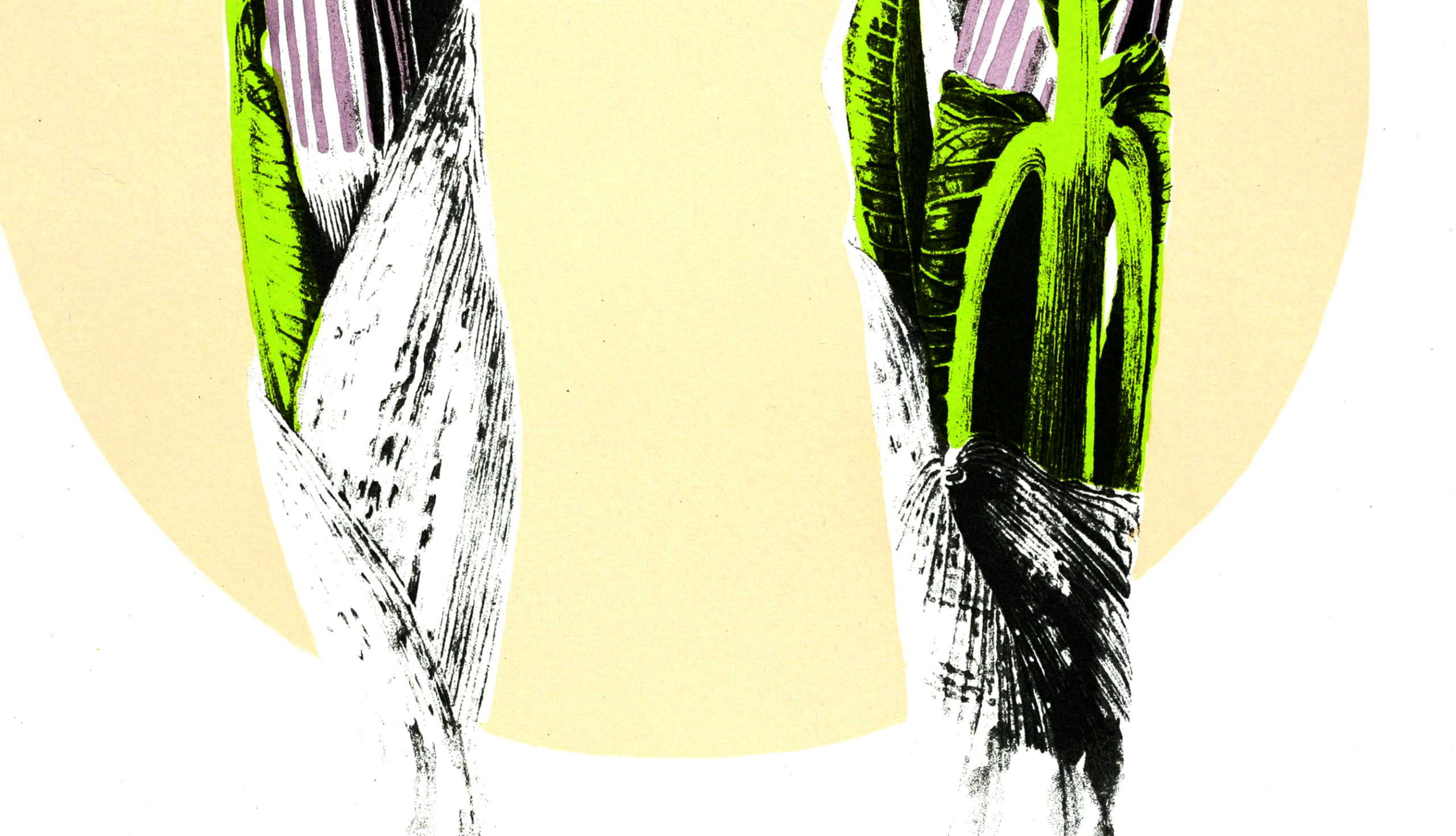Arisaema ringens with geometric styling
Screen print on Somerset cartridge, no.1of 5 float mounted on charcoal board, framed in dark grey/black
38cm x 28.2cm, framed to 49cm x 39cm
Limited edition run of 5*, 4 available unframed – £245, 1 is framed – £300
Available from the shop unframed >>
*2 of these (4/5 and 5/5) are on a different paper at 390mm x 270mm
An original screen print of Arisaema ringens .
This is a four colour screen print. I love the distinction that the purple and white overlaid with black gives to the stripes in the A. ringens spathe, and the structure of the leaflets with their ‘shoulders’.
Botanical details
Japanese common name: Musashi-abumi. Abumi are early Japanese stirrups, Miyamoto Musashi (c. 1584 – June 13, 1645) was an expert Japanese swordsman and rōnin. My conjecture is that the common name may mean Mushahi’s stirrups. The abumi are very similar in shape to the hooded spathe of A. ringens.
Section Pistillata (Engl.) Nakai, Bot. Mag. (Tokyo) 43:525 (1929); G. & L Gusman, stat. nov. Subsection Ringentia (Engl.) G. & L. Gusman, stat. nov.
A. ringens is quite unique amongst Pistillata, in that it has a galeate inflorescence (helmet shaped/hooded), a simple eophyll (first leaf) and a creamy white receptacle. The galeate inflorescence is similar to A. galeatum, in the Arisaema section, however the shape of the spadix appendage shows its relation within Pistillata. It is popularly cultivated because of its great foliage and fantastic inflorescence, but it seldom produces ripe fruits, probably due to lack of a good pollinator outside of its natural environment.
Deciduous, to 110cm tall and 80cm wide, distribution through Japan; Honshu, Shikoku, Kyushu and Ryukyu, S Korea, China; Taiwan, Jiangsu and Zhejiang. Woodland clearings in leafy soil at low altitude near the seacoast. Flowering period March to May, ripening November.
“The Genus Arisaema, A Monograph for Botanist and Nature Lovers“, Guy and Liliane Gusman, 2006, A.R.G. Gantner Verlag K.G. “Flora of Japan (in English)”, Jisaburo Ohwi, National Science Museum, Tokyo, Japan. A combined, much revised, and extended translation by the author of his FLORA OF JAPAN (1953) FLORA OF JAPAN— PTERIDOPHYTA (1957) Edited by Frederick G. Meyer Research Botanist, U.S. National Arboretum and Egbert H. Walker Research Associate, Smithsonian Institution SMITHSONIAN INSTITUTION WASHINGTON, D.C. 1965



